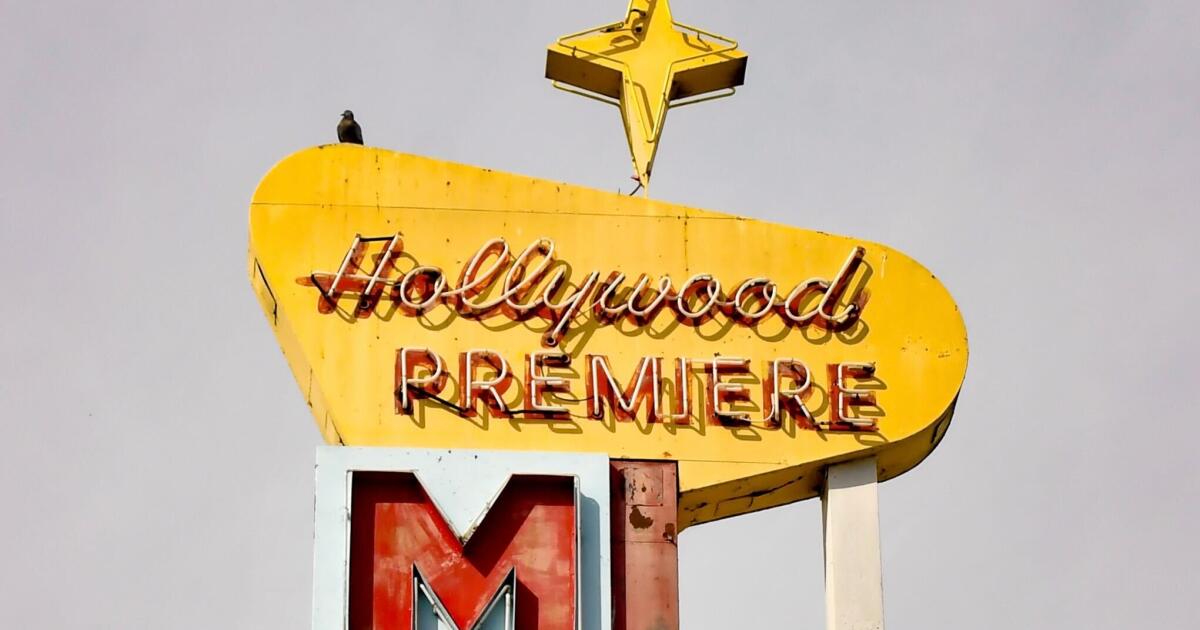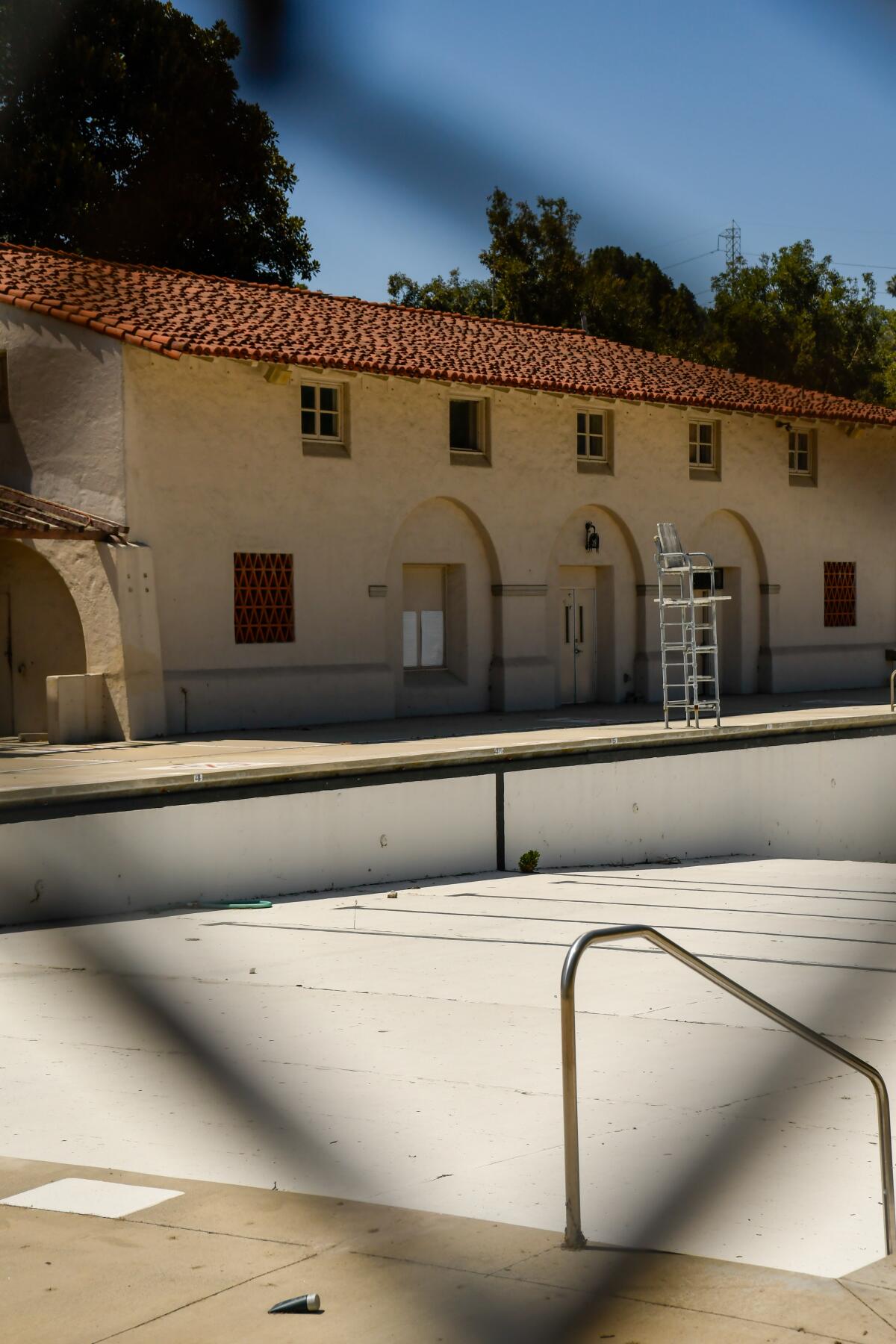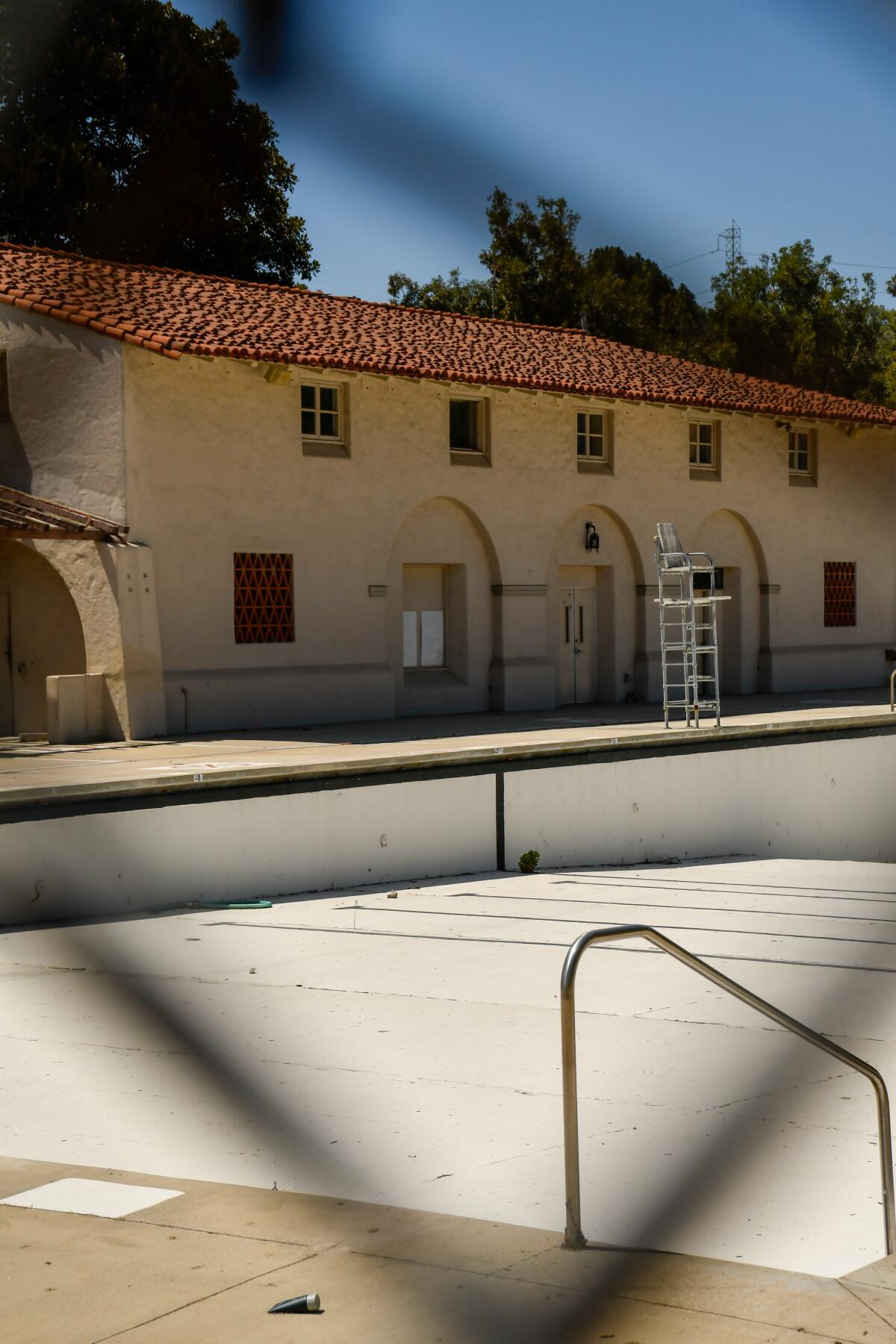This rundown Hollywood motel gets a new status: L.A. historic monument
The Hollywood Premiere Motel doesn’t get a lot of rave reviews — in fact, it’s among the lowest ranked lodgings in the city. But thanks to its mid-century Googie design, it is the first motel to join the L.A.’s Historic-Cultural Monument List.
The City Council approved that designation on Wednesday, singling out the 1960 motel and its weathered neon sign as prime examples from the glory days of roadside architecture. There was no opposition or discussion, nor did the motel owner, listed as Yang Hua Xi, take a position.
“It may have a 1.7-star Tripadvisor rating, but we don’t judge our landmarks by thread count,” said Councilman Hugo Soto-Martinez, whose 13th District includes the motel, in a statement.
That Tripadvisor score ranks the motel 110th of 118 motels in Los Angeles, and its Yelp reviews aren’t any better. “Felt like puking,” wrote one Yelp user in May.
The two-story motel, which stands at Hollywood Boulevard and Serrano Avenue, was nominated by preservationist James Dastoli.
“This, to me, is a landmark that defines the entire neighborhood of East Hollywood,” Dastoli said at a city Cultural Heritage Committee meeting in March.
“My initial response, looking at the nomination, was, really?” said commission President Barry Milofsky. But he went on to support the designation.
Though the motel parking lot is often empty, its look has attracted frequent filming in the last decade, including TV’s “Twin Peaks,” “Fargo” and “NCIS: Los Angeles,” along with Justin Timberlake’s 2016 “Can’t Stop the Feeling” music video.
In their report on the site, city staffers found that the motel serves as “an excellent example of a 1960s motel that accommodated automobile tourism in Hollywood” and is “a highly intact and rare example of a 1960s motel in Hollywood.”
After the 1960s, the staff report noted that “motels began to fall out of favor as chains such Holiday Inn increasingly dominated the industry” and tourists turned to more compact building types with corridors indoors, not outside.
Soto-Martinez called the Hollywood Premiere “a survivor — still standing after decades of change in Hollywood.”
The Hollywood Premiere was built in 1960 with 42 units in a two-story, stucco-clad building, with a tall, Googie-style neon sign on a pole, parking near the guest rooms and a swimming pool at the corner of the lot behind breeze blocks. It once had a coffee shop, but that space is now idle. The architect was Joyce Miller, a woman working in a trade then dominated by men.
With Tuesday’s vote, the motel joins a Historic-Cultural Monuments list that includes more than 1,300 businesses, homes and landscape features. Begun in 1962, the list includes familiar icons like Union Station, the Bradbury Building and the Hollywood sign but also many less obvious choices, including Taix French Restaurant (built in 1929); the Studio City site of the Oil Can Harry’s bar (which operated from 1968 to 2021; and Leone’s Castle, a 1936 San Pedro apartment building designed to resemble a French castle.
Designation as a city Historic-Cultural Monument doesn’t automatically protect a building from changes or demolition, nor does it trigger any government spending on preservation. But once a building is designated a landmark, the city’s Office of Historic Resources must review permit application before any alterations are allowed. Demolition is forbidden unless an environmental review has been approved.
The city’s staff report also cited several other roadside lodgings that serve as “exemplary and intact examples of the Mid-Century Modern architectural style,” including the Beverly Laurel Motor Hotel (1964), the Wilshire Twilighter Motor Hotel (1958; now known as the Dunes Inn) and the Hollywood Downtowner Motel (1956), which is being converted into 30 interim residences for people at risk of homelessness as part of the state’s Project Homekey. So far, the Downtowner’s twinkling neon sign above Hollywood Boulevard has been preserved.


